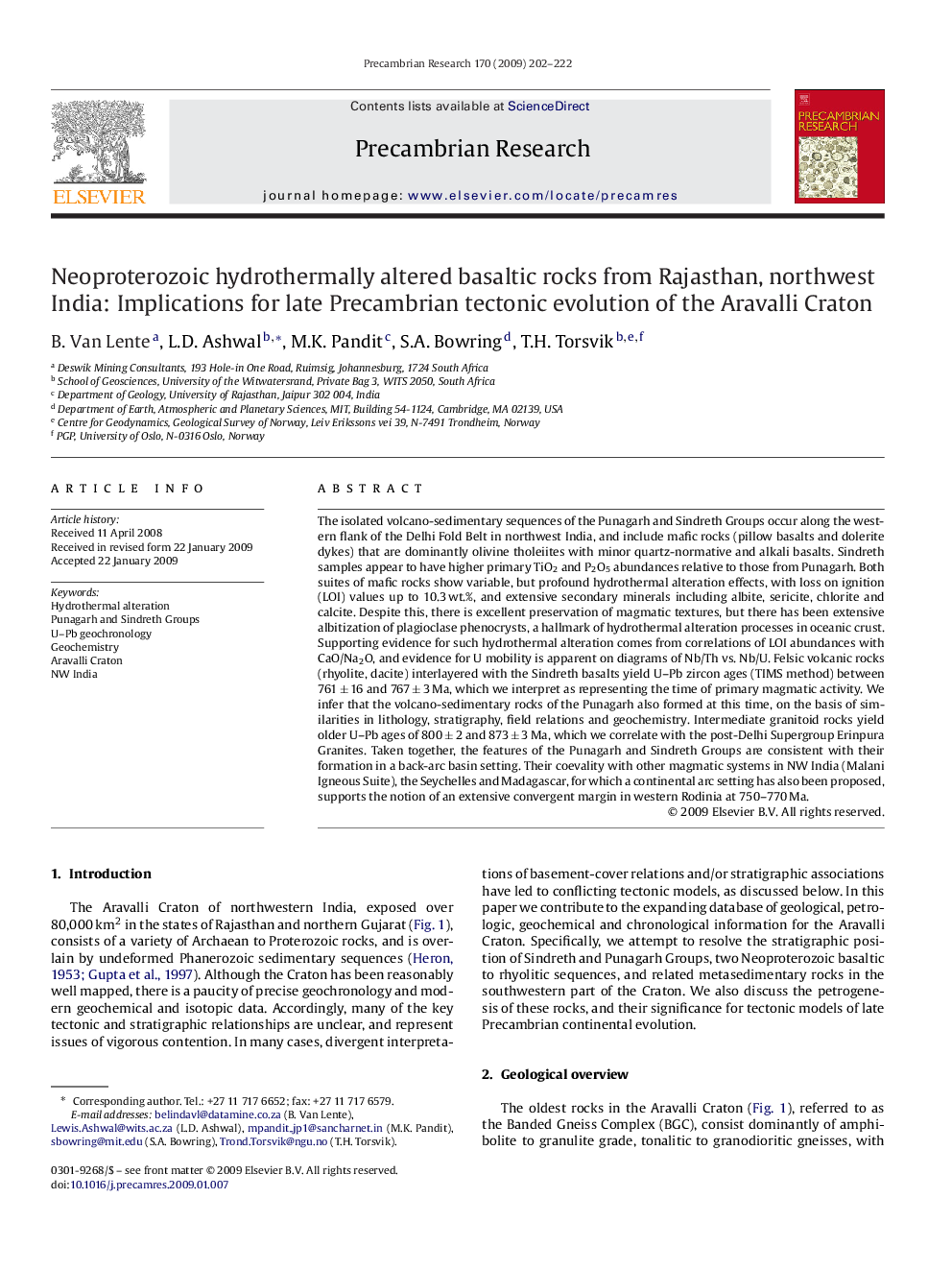| کد مقاله | کد نشریه | سال انتشار | مقاله انگلیسی | نسخه تمام متن |
|---|---|---|---|---|
| 4724008 | 1639691 | 2009 | 21 صفحه PDF | دانلود رایگان |
عنوان انگلیسی مقاله ISI
Neoproterozoic hydrothermally altered basaltic rocks from Rajasthan, northwest India: Implications for late Precambrian tectonic evolution of the Aravalli Craton
دانلود مقاله + سفارش ترجمه
دانلود مقاله ISI انگلیسی
رایگان برای ایرانیان
کلمات کلیدی
موضوعات مرتبط
مهندسی و علوم پایه
علوم زمین و سیارات
ژئوشیمی و پترولوژی
پیش نمایش صفحه اول مقاله

چکیده انگلیسی
The isolated volcano-sedimentary sequences of the Punagarh and Sindreth Groups occur along the western flank of the Delhi Fold Belt in northwest India, and include mafic rocks (pillow basalts and dolerite dykes) that are dominantly olivine tholeiites with minor quartz-normative and alkali basalts. Sindreth samples appear to have higher primary TiO2 and P2O5 abundances relative to those from Punagarh. Both suites of mafic rocks show variable, but profound hydrothermal alteration effects, with loss on ignition (LOI) values up to 10.3 wt.%, and extensive secondary minerals including albite, sericite, chlorite and calcite. Despite this, there is excellent preservation of magmatic textures, but there has been extensive albitization of plagioclase phenocrysts, a hallmark of hydrothermal alteration processes in oceanic crust. Supporting evidence for such hydrothermal alteration comes from correlations of LOI abundances with CaO/Na2O, and evidence for U mobility is apparent on diagrams of Nb/Th vs. Nb/U. Felsic volcanic rocks (rhyolite, dacite) interlayered with the Sindreth basalts yield U-Pb zircon ages (TIMS method) between 761 ± 16 and 767 ± 3 Ma, which we interpret as representing the time of primary magmatic activity. We infer that the volcano-sedimentary rocks of the Punagarh also formed at this time, on the basis of similarities in lithology, stratigraphy, field relations and geochemistry. Intermediate granitoid rocks yield older U-Pb ages of 800 ± 2 and 873 ± 3 Ma, which we correlate with the post-Delhi Supergroup Erinpura Granites. Taken together, the features of the Punagarh and Sindreth Groups are consistent with their formation in a back-arc basin setting. Their coevality with other magmatic systems in NW India (Malani Igneous Suite), the Seychelles and Madagascar, for which a continental arc setting has also been proposed, supports the notion of an extensive convergent margin in western Rodinia at 750-770 Ma.
ناشر
Database: Elsevier - ScienceDirect (ساینس دایرکت)
Journal: Precambrian Research - Volume 170, Issues 3â4, May 2009, Pages 202-222
Journal: Precambrian Research - Volume 170, Issues 3â4, May 2009, Pages 202-222
نویسندگان
B. Van Lente, L.D. Ashwal, M.K. Pandit, S.A. Bowring, T.H. Torsvik,